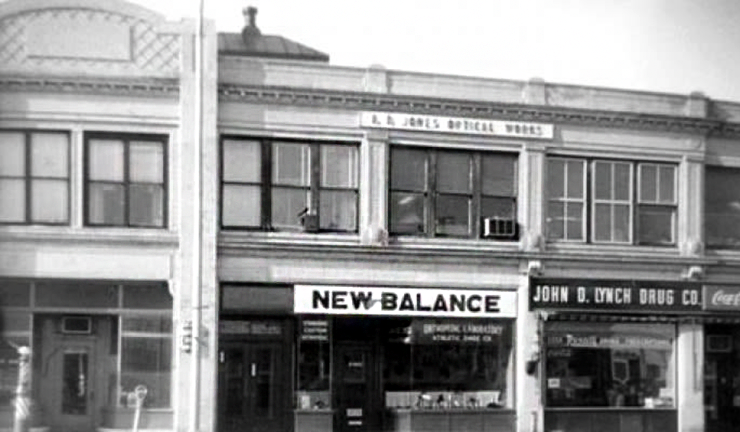William J. Riley, an innovative British immigrant to the United States, is credited as the founder of “New Balance”, one of the world’s most iconic and enduring athletic footwear brands. His vision for creating functional, high-quality footwear that improved support and balance laid the foundation for a company that would evolve into a global powerhouse in the footwear and sportswear industry. Riley’s story is one of ingenuity, craftsmanship, and an unwavering commitment to meeting the needs of his customers.

Born in 1868 in England, William J. Riley immigrated to the United States in the early 20th century, settling in Boston, Massachusetts. This was a period of rapid industrial growth and innovation, particularly in the footwear industry, as Boston was emerging as a hub for shoe manufacturing. Riley observed a growing demand for shoes that offered not only style but also superior comfort and support for workers who spent long hours on their feet. With a keen understanding of mechanics and human anatomy, Riley was determined to create a solution.

In 1906, Riley established the New Balance Arch Support Company. Initially, the business focused on producing arch supports and orthotic inserts, primarily designed to improve balance, stability, and comfort. Riley’s approach was highly technical for the time. He drew inspiration from the natural balance of chickens, reportedly studying the way their three-pronged feet enabled them to stand and move effortlessly. This observation led to his design of arch supports with three contact points, a groundbreaking innovation that provided exceptional support and stability.

Riley’s early products were an immediate success, particularly among individuals who spent long hours standing, such as policemen, laborers, and waitstaff. The arch supports were celebrated for their ability to alleviate foot pain and enhance balance, a testament to Riley’s ingenuity and dedication to solving real-world problems. He built a reputation for quality craftsmanship and personalized service, often tailoring his products to suit individual customer needs.

The 1930s marked a turning point for Riley and “New Balance”. By this time, the company’s reputation for comfort and support began to attract athletes looking for a competitive edge. Riley’s focus shifted from arch supports to custom-made athletic footwear that combined performance, comfort, and innovation. Each shoe was meticulously crafted to fit the individual athlete, reflecting Riley’s commitment to personalized, high-quality solutions.

Riley’s legacy was further amplified when New Balance expanded under new leadership after his retirement. However, his core principles of quality, performance, and fit remained deeply embedded in the brand’s DNA. New Balance would go on to introduce innovations such as the use of high-quality materials, improved sole designs, and precise manufacturing techniques, all of which can be traced back to Riley’s foundational work.

While Riley himself kept a relatively low profile, his contributions to the footwear industry were profound. He was a pioneer of the idea that footwear should not just look good but also promote health, performance, and balance. In many ways, Riley was ahead of his time, anticipating the modern demand for functional, ergonomic footwear long before it became mainstream.

Today, New Balance stands as a tribute to William J. Riley’s vision and craftsmanship. It remains one of the few major footwear brands committed to manufacturing in the United States, staying true to Riley’s legacy of quality and integrity. His innovative approach to design and dedication to customer needs paved the way for New Balance to become a global leader, trusted by athletes, workers, and consumers worldwide.

In retrospect, William J. Riley was not simply a shoemaker—he was a visionary who understood the relationship between form, function, and human anatomy. Through his relentless pursuit of comfort and balance, Riley transformed a small arch support company into a legacy brand that continues to inspire generations. His contributions remind us that great ideas often begin with simple observations, and innovation stems from the desire to improve lives. Riley’s story is one of passion, ingenuity, and a commitment to making every step count.



